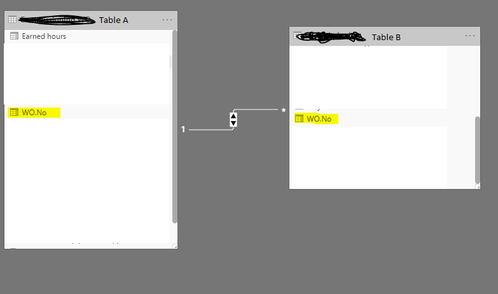FabCon is coming to Atlanta
Join us at FabCon Atlanta from March 16 - 20, 2026, for the ultimate Fabric, Power BI, AI and SQL community-led event. Save $200 with code FABCOMM.
Register now!- Power BI forums
- Get Help with Power BI
- Desktop
- Service
- Report Server
- Power Query
- Mobile Apps
- Developer
- DAX Commands and Tips
- Custom Visuals Development Discussion
- Health and Life Sciences
- Power BI Spanish forums
- Translated Spanish Desktop
- Training and Consulting
- Instructor Led Training
- Dashboard in a Day for Women, by Women
- Galleries
- Data Stories Gallery
- Themes Gallery
- Contests Gallery
- QuickViz Gallery
- Quick Measures Gallery
- Visual Calculations Gallery
- Notebook Gallery
- Translytical Task Flow Gallery
- TMDL Gallery
- R Script Showcase
- Webinars and Video Gallery
- Ideas
- Custom Visuals Ideas (read-only)
- Issues
- Issues
- Events
- Upcoming Events
The Power BI Data Visualization World Championships is back! Get ahead of the game and start preparing now! Learn more
- Power BI forums
- Forums
- Get Help with Power BI
- Desktop
- Bi-directional filter, SUM issue
- Subscribe to RSS Feed
- Mark Topic as New
- Mark Topic as Read
- Float this Topic for Current User
- Bookmark
- Subscribe
- Printer Friendly Page
- Mark as New
- Bookmark
- Subscribe
- Mute
- Subscribe to RSS Feed
- Permalink
- Report Inappropriate Content
Bi-directional filter, SUM issue
Hi,
Trying to understand the filtering in my report. I have two tables where Table A is my fact table and Table B is dimensions with attributes for WO.No. There are some issues with the quality of the data, so the relationship should have been 1 to 1 (table B filtering A), but for multiple reasons I can’t change as of now
Table B
Wo.No | Attribute 1 |
Blank | A |
014869 | A |
Blank | B |
014879 | C |
Table A - All Wo.No in Table A are also in Table B. No duplicates in Table A
Wo.No | Earned |
014869 | 41 |
014879 | 0 |
014880 | 1 |
014881 | 6 |
I want the Filtered Table B Wo.No<>Blank
Wo.No | Attribute 1 |
014869 | A |
014879 | C |
So, tried to filter, but then my total “Earned hours” changes. For Each Wo.No it stays unchanged, it’s only the total sum that is different. Any suggestions?
Also tried with a measure like:
Earned hrs = VAR wonos = DISTINCT ( Table B[WO.No] ) RETURN CALCULATE(SUM ( Table A'[Earned hours] );'Table A'[WO.No] IN wonos)
I think the bi-directional filter is playing me a trick. Really appreciate some input
Solved! Go to Solution.
- Mark as New
- Bookmark
- Subscribe
- Mute
- Subscribe to RSS Feed
- Permalink
- Report Inappropriate Content
Hi!
Thanks for your follow-up and sorry for my late reply. Was not an issue with the sum but in addition to having blank fields my table B was also missing values, so when filtering om blank I was also missing out some orders. Thanks for the follow-up either way! 🙂
- Mark as New
- Bookmark
- Subscribe
- Mute
- Subscribe to RSS Feed
- Permalink
- Report Inappropriate Content
Hi @mueland ,
Does that make sense? If so, kindly mark my answer as a solution to help others having the similar issue and close the case. If not, let me know and I'll try to help you further.
Best regards
Amy
- Mark as New
- Bookmark
- Subscribe
- Mute
- Subscribe to RSS Feed
- Permalink
- Report Inappropriate Content
Hi!
Thanks for your follow-up and sorry for my late reply. Was not an issue with the sum but in addition to having blank fields my table B was also missing values, so when filtering om blank I was also missing out some orders. Thanks for the follow-up either way! 🙂
- Mark as New
- Bookmark
- Subscribe
- Mute
- Subscribe to RSS Feed
- Permalink
- Report Inappropriate Content
Hi @mueland ,
You can create measure like DAX below.
Earned total = CALCULATE(SUM(TableA[Earned]))
Or you needn't to create anything, just change the show aggregation.
Best Regards,
Amy
If this post helps, then please consider Accept it as the solution to help the other members find it more quickly.
Helpful resources

Power BI Dataviz World Championships
The Power BI Data Visualization World Championships is back! Get ahead of the game and start preparing now!

| User | Count |
|---|---|
| 37 | |
| 37 | |
| 33 | |
| 32 | |
| 29 |
| User | Count |
|---|---|
| 130 | |
| 88 | |
| 82 | |
| 68 | |
| 64 |




